Let’s say that we’re having an election, we’re voting for our "Favourite Three’s Company Character". Our four candidates, in no particular order, are:
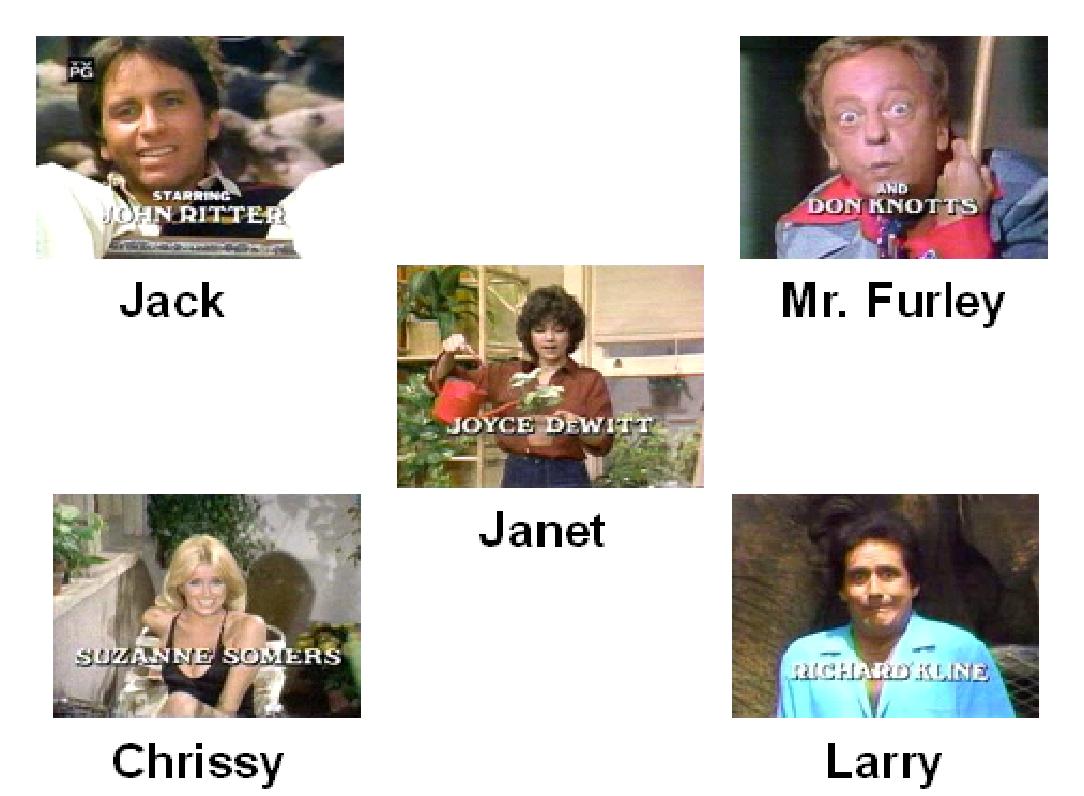
And a vote is taken giving us results of:
- Jack = 33%
- Mr. Furley = 25%
- Janet = 16%
- Chrissy = 19%
- Larry = 7%
Anyways, under our current system, Jack would be declared the winner outright, this despite the fact that 67% voted against him. He would win with a minority share of the vote having benefited from opposition to his popularity being split amongst the other candidates. What would be nice is if there was a way of ensuring that whomever gets elected does so with a majority of the votes (in this case, more than 50%); because then it can be argue that the candidate truly has the support of the people.
One way of addressing this problem is by voting in rounds, called Run-off Voting (it's fairly commonly used, with variations used to in leadership conventions, some presidential elections etc., the CBC used it when we voted for the new Hockey Night in Canada theme song). With Run-off Voting, you take a vote, eliminate the lowest vote getter if there is no winner, take a revote of the remaining candidates, and then repeat until someone wins a majority vote, which in this case is 50% + 1. Let’s see how that would work.
So entering the second round of voting, Larry would be the first to go, having only garnered 7% of the vote. Now, in a revote, the people who originally voted for the remaining four candidates (Jack, Janet, Mr. Furley and Chrissy) wouldn’t be changing their vote; their candidates are still in it. It’d only be Larry’s voters who would have to make a switch. So what we’re really doing is simply taking Larry’s votes and redistributing them amongst the other four candidates: in other words, Larry’s voters are now going to have to vote for their second choice candidates.
And let’s say in the second round that about half of them vote for Jack and the other half vote for Mr. Furley, just to make it easy.
Second Round Results
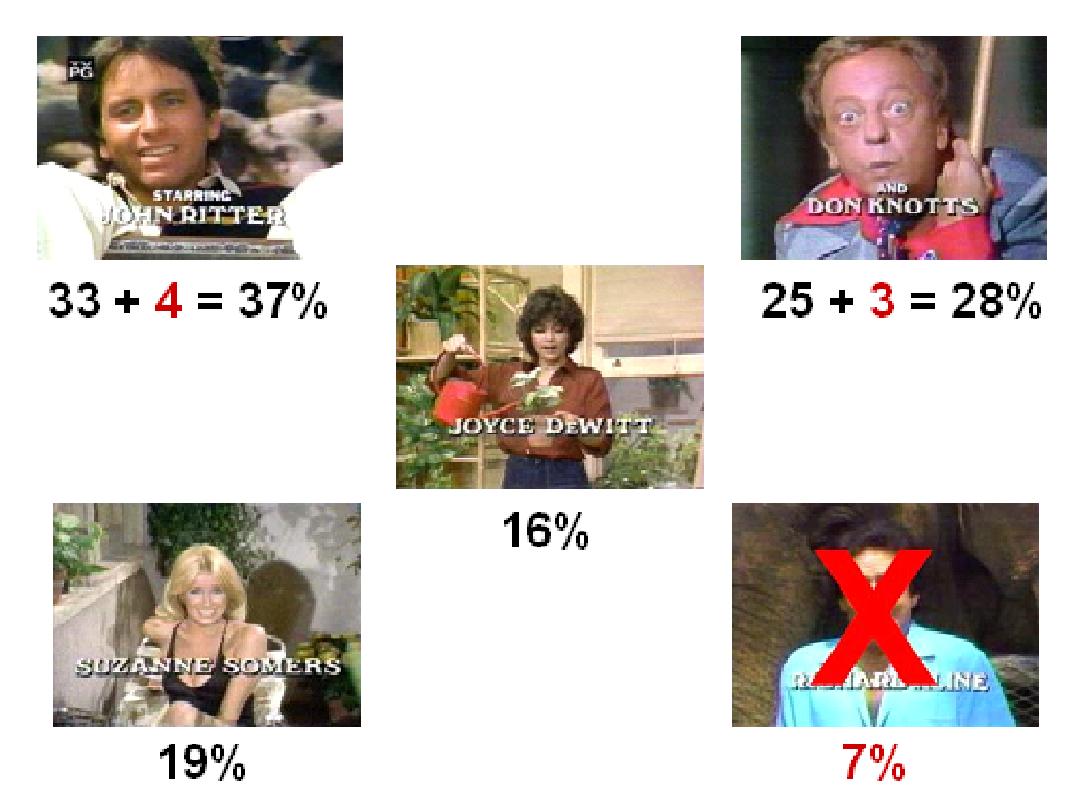
Third Round Results
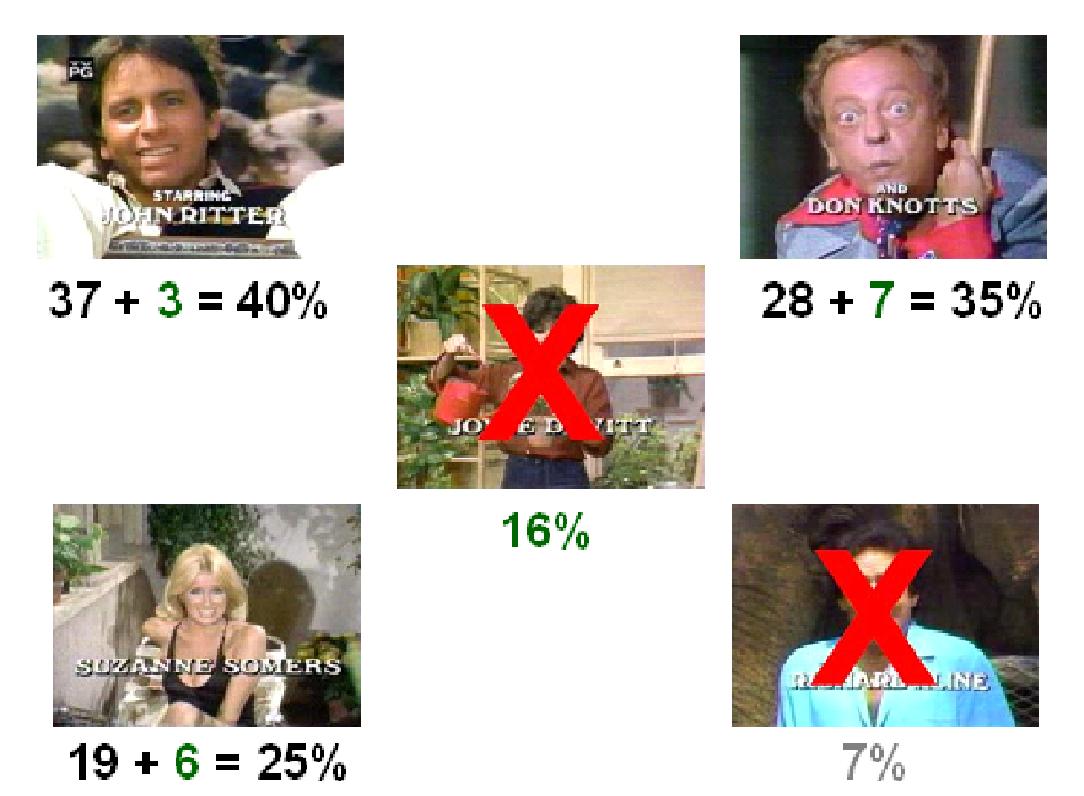
Ooo… Jack’s got to watch his back.
Ok, one last round and…
Final Round Results
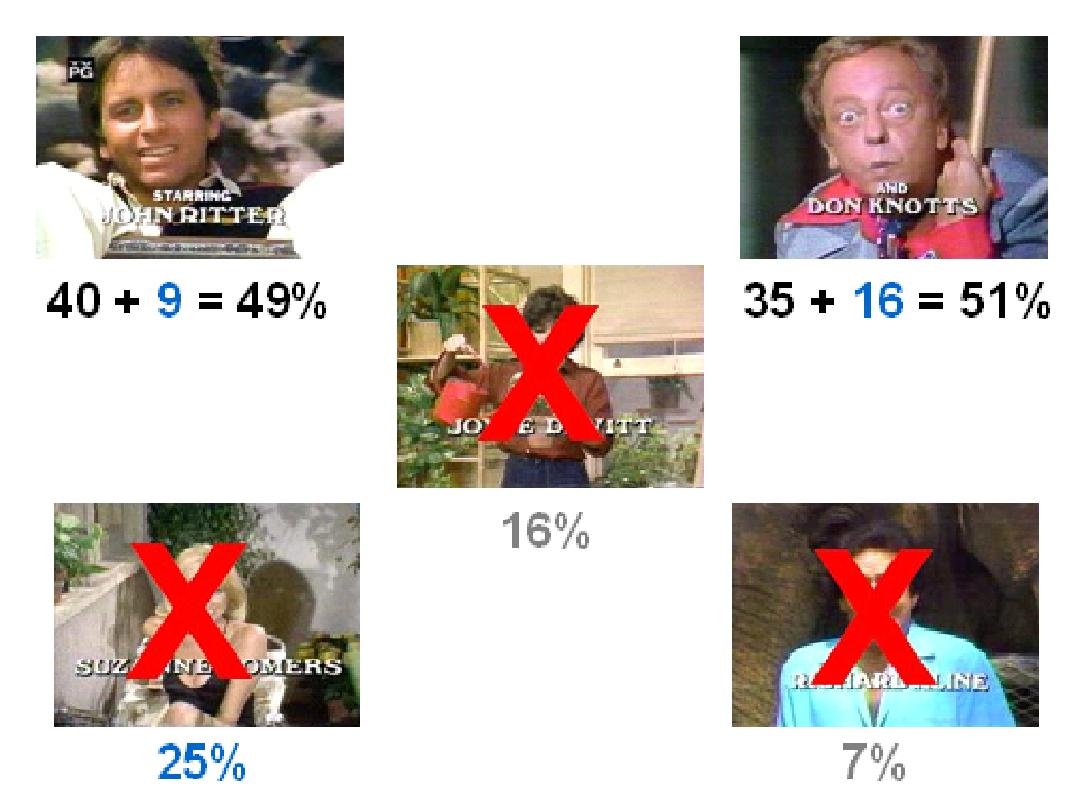
What Run-off voting does is ensure that a winning candidate does so with a majority vote, more accurately reflecting voter preferences. The only problem with this is that it’s very time consuming as it requires voters to make multiple trips to the voting booth along with the necessity of recounting votes every round.
STV does the same thing as Run-off voting and even improves on it so that you get the benefits of voting in rounds without the need to go back and forth to the voting booth. This is achieved in the way the ballot is set up:

This is what the ballot would look like in this particular election. You’d have all the candidates listed as before, except instead of marking an X by your candidate of choice, you would simply rank the candidates from you first choice to your last choice.
That’s it. It’s that easy.
What you’re saying by your ranking is “if my first choice gets eliminated, this is who I would vote for in the next round”. So instead of having to make multiple trips to the voting booth, you only have to make one. You can rank some of the choices, as above…
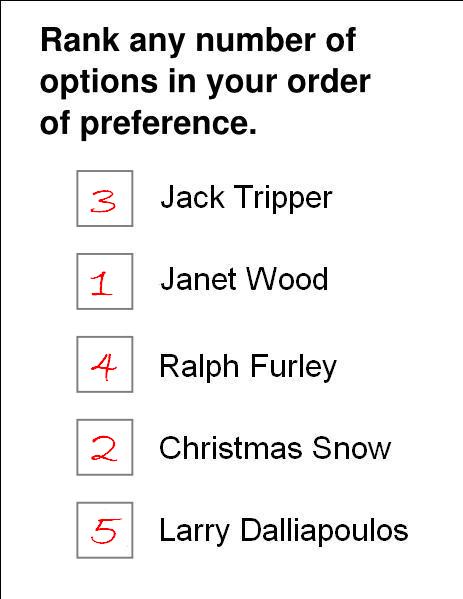 … you can rank all of the choices…
… you can rank all of the choices……or you can rank just one.
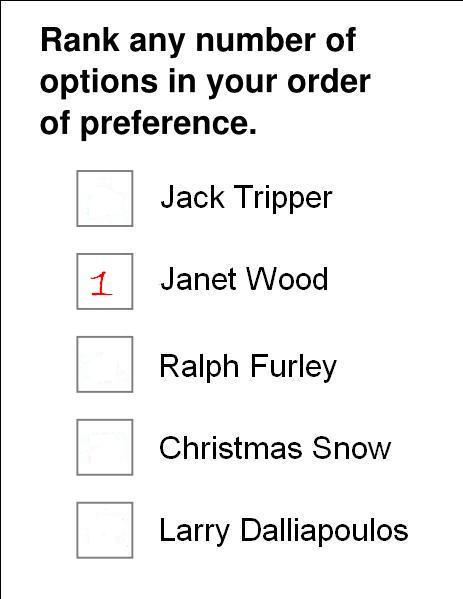
The choice is entirely yours.
Back to How Does BC-STV Work? Mainpage.
No comments:
Post a Comment